-
 Bitcoin
Bitcoin $108,165.4587
0.78% -
 Ethereum
Ethereum $2,456.3517
1.15% -
 Tether USDt
Tether USDt $1.0003
0.00% -
 XRP
XRP $2.1934
0.05% -
 BNB
BNB $650.0935
0.52% -
 Solana
Solana $151.3905
2.69% -
 USDC
USDC $0.9998
0.00% -
 TRON
TRON $0.2751
-0.32% -
 Dogecoin
Dogecoin $0.1640
0.87% -
 Cardano
Cardano $0.5631
0.57% -
 Hyperliquid
Hyperliquid $38.7115
4.69% -
 Bitcoin Cash
Bitcoin Cash $493.1868
-0.39% -
 Sui
Sui $2.8217
3.61% -
 Chainlink
Chainlink $13.3994
2.08% -
 UNUS SED LEO
UNUS SED LEO $9.1632
0.94% -
 Avalanche
Avalanche $18.0318
1.97% -
 Stellar
Stellar $0.2388
0.35% -
 Toncoin
Toncoin $2.8763
1.41% -
 Shiba Inu
Shiba Inu $0.0...01160
1.59% -
 Litecoin
Litecoin $86.6393
1.29% -
 Hedera
Hedera $0.1485
0.16% -
 Monero
Monero $315.7948
1.56% -
 Polkadot
Polkadot $3.4240
1.88% -
 Bitget Token
Bitget Token $4.6314
-0.44% -
 Dai
Dai $0.9998
-0.01% -
 Ethena USDe
Ethena USDe $1.0002
-0.01% -
 Uniswap
Uniswap $7.2110
2.59% -
 Aave
Aave $270.6087
6.07% -
 Pi
Pi $0.5350
0.52% -
 Pepe
Pepe $0.0...09545
1.26%
What is the second low point of the W-bottom pattern? Where is the stop loss set?
The W-bottom pattern signals a potential bullish reversal in crypto trading, marked by two lows and confirmed by a breakout above resistance.
Jun 29, 2025 at 11:01 am
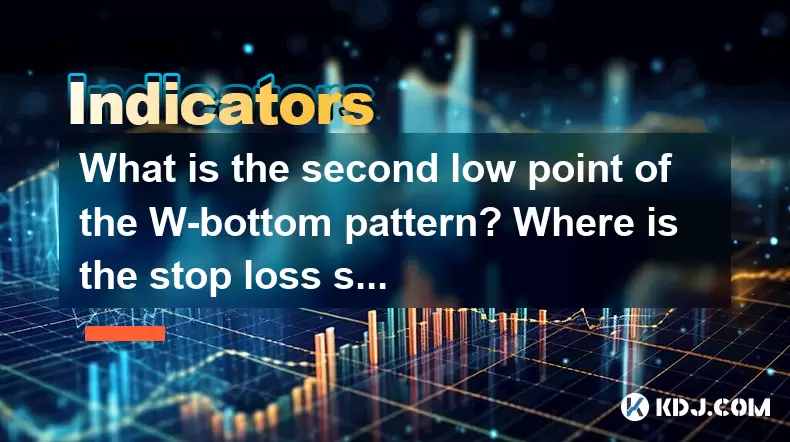
Understanding the W-Bottom Pattern in Cryptocurrency Trading
The W-bottom pattern is a popular technical analysis formation used by traders to identify potential reversals from a downtrend to an uptrend. It is named for its resemblance to the letter "W" when plotted on a price chart. This pattern typically forms after a significant decline and indicates that selling pressure has diminished, and buyers are beginning to take control.
In the context of cryptocurrency trading, where volatility is high and trends can reverse quickly, recognizing the W-bottom pattern becomes crucial. The pattern consists of two distinct lows separated by a moderate rally. These two lows form what traders refer to as the first and second low points of the pattern.
The second low point of the W-bottom pattern occurs after the initial rebound from the first low. After reaching a certain resistance level, the price retraces again but does not fall below the previous low, forming the second low. This second dip signals that bears are losing strength and bulls may soon dominate.
Identifying the Second Low Point Accurately
To correctly identify the second low point, traders must ensure that the price does not break below the level of the first low. If it does, the pattern is invalidated. In cryptocurrency charts, especially those of altcoins or Bitcoin, this often happens with volume characteristics: the second low usually sees lower volume compared to the first low, suggesting weakening bearish momentum.
It's essential to wait for confirmation before acting on the W-bottom pattern. Confirmation typically comes when the price breaks above the intermediate resistance level formed between the two lows. This breakout confirms the reversal and marks the completion of the W-bottom structure.
- Observe two distinct lows at approximately the same price level.
- Check for volume patterns, which should show decreasing volume during the second low.
- Look for a confirmed breakout above the resistance formed between the two lows.
Setting Stop Loss in a W-Bottom Trade Setup
Once the W-bottom pattern is confirmed, traders need to determine where to place a stop loss to manage risk effectively. A well-placed stop loss helps protect capital if the pattern fails and the downtrend resumes unexpectedly.
The ideal placement of the stop loss is just below the second low point. This ensures that if the price falls below this critical support level, the trade is exited before larger losses occur. Placing the stop too close might trigger premature exits due to normal market noise, while placing it too far risks unnecessary capital exposure.
- Locate the lowest point of the second low on the chart.
- Add a small buffer (e.g., 1–2%) below this level to avoid being stopped out by minor fluctuations.
- Set the stop loss order accordingly on your trading platform.
Using Price Action and Indicators to Confirm the W-Bottom
While the W-bottom pattern itself is a strong visual indicator, combining it with other tools enhances reliability. Traders often use moving averages, RSI (Relative Strength Index), and candlestick patterns to confirm the validity of the W-bottom.
For example, if the RSI forms a bullish divergence during the second low, it strengthens the case for a reversal. Similarly, a bullish engulfing candlestick pattern forming at the second low can serve as a powerful signal.
- Overlay the RSI indicator to check for bullish divergences.
- Use moving averages like the 50-period and 200-period to assess trend alignment.
- Watch for candlestick formations near the second low for additional confirmation.
Practical Example of a W-Bottom Trade in Crypto Markets
Consider a scenario where Ethereum (ETH) experiences a sharp decline over several days, hitting a low at $1,500. It then rebounds to $1,700 before falling again. However, instead of breaking below $1,500, it finds support around $1,520 — forming the second low. The price then rallies past $1,700, confirming the W-bottom pattern.
In this case, a trader would enter a long position once the price closes above $1,700. The stop loss would be placed slightly below the second low, say at $1,500. The profit target could be set based on the height of the W pattern — in this case, the distance from $1,500 to $1,700 is $200, so the profit target would be $1,900 ($1,700 + $200).
- Entry point: Above the resistance formed between the two lows.
- Stop loss: Just below the second low with a small buffer.
- Take profit: Measured move based on the depth of the W pattern.
Frequently Asked Questions (FAQs)
Q: Can the W-bottom pattern appear in all timeframes?
Yes, the W-bottom pattern can be observed across various timeframes including 1-hour, 4-hour, daily, and weekly charts. However, the significance of the pattern increases with higher timeframes.
Q: What happens if the price breaks below the second low after a W-bottom?
If the price breaks below the second low after forming a W-bottom, the pattern is considered invalid. Traders should exit any positions immediately, as the downtrend may resume.
Q: Is the W-bottom pattern reliable in highly volatile crypto markets?
The W-bottom pattern remains reliable in volatile conditions provided there is proper volume confirmation and confluence with other indicators. Volatility may cause false signals, so using additional filters improves accuracy.
Q: Should I always wait for the breakout before entering a W-bottom trade?
Yes, waiting for the breakout above the resistance level formed between the two lows provides better confirmation. Entering prematurely may lead to losses if the pattern fails.
Disclaimer:info@kdj.com
The information provided is not trading advice. kdj.com does not assume any responsibility for any investments made based on the information provided in this article. Cryptocurrencies are highly volatile and it is highly recommended that you invest with caution after thorough research!
If you believe that the content used on this website infringes your copyright, please contact us immediately (info@kdj.com) and we will delete it promptly.
- SEI TVL Soars, Price Hints at Breakout: What's Next?
- 2025-06-29 18:30:12
- Cardano, Bitcoin Cash, Remittix: Charting the Course for Crypto's Next Big Moves
- 2025-06-29 18:50:12
- Stock Market News, Weekly Review, June 2025: A Month of Crypto, Commodities, and Corporate Maneuvers
- 2025-06-29 18:30:12
- Vitalik Buterin, Sam Altman, and the World of Digital Identity: A Delicate Balance
- 2025-06-29 19:10:15
- Crypto Diplomacy Takes Root: Pakistan's Bitcoin Reserve Ambitions
- 2025-06-29 18:55:12
- Altcoins on the Rebound? Institutional Interest Ignites Recovery Hopes
- 2025-06-29 18:55:12
Related knowledge
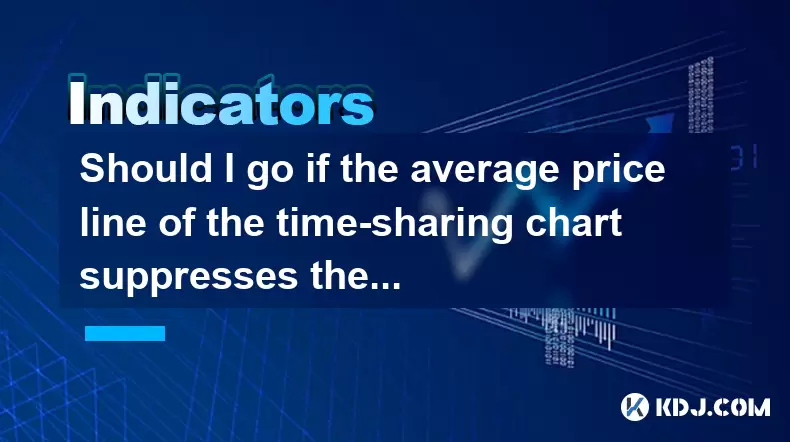
Should I go if the average price line of the time-sharing chart suppresses the rebound?
Jun 28,2025 at 05:14pm
Understanding the Time-Sharing Chart and Average Price LineThe time-sharing chart is a real-time chart used in cryptocurrency trading to visualize price movements over short intervals, typically within a single trading day. It provides traders with insights into intraday volatility and momentum. The average price line, often calculated as a moving avera...
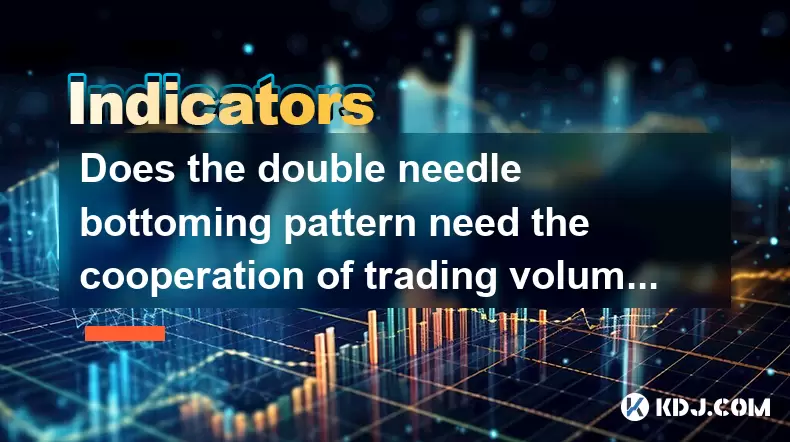
Does the double needle bottoming pattern need the cooperation of trading volume?
Jun 29,2025 at 06:29pm
Understanding the Double Needle Bottoming PatternThe double needle bottoming pattern is a significant technical analysis formation often observed in cryptocurrency charts. It typically appears after a downtrend and signals a potential reversal to an uptrend. Visually, it consists of two consecutive candlesticks with long lower shadows and small real bod...
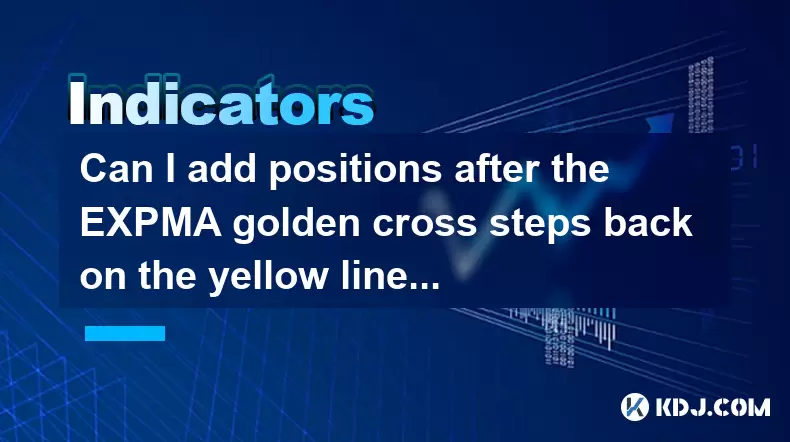
Can I add positions after the EXPMA golden cross steps back on the yellow line?
Jun 28,2025 at 11:57am
Understanding the EXPMA Indicator and Its RelevanceThe EXPMA (Exponential Moving Average) is a technical analysis tool used by traders to identify trends and potential entry or exit points in financial markets, including cryptocurrency trading. Unlike simple moving averages, EXPMA gives more weight to recent price data, making it more responsive to new ...

How to operate the next day after the daily limit is released with huge volume?
Jun 28,2025 at 12:35pm
Understanding the Daily Limit and Its ReleaseIn cryptocurrency trading, daily limits are often set by exchanges to manage volatility or during periods of high market activity. These limits can restrict how much an asset's price can fluctuate within a 24-hour period. When the daily limit is released, it typically means that the price cap has been lifted,...
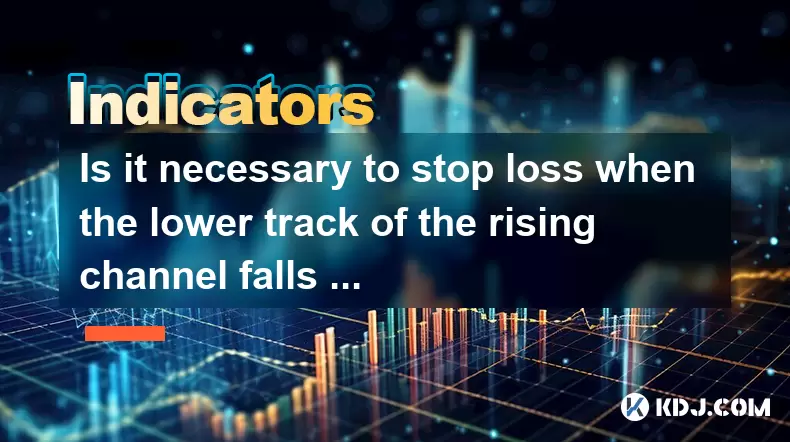
Is it necessary to stop loss when the lower track of the rising channel falls below?
Jun 28,2025 at 05:29pm
Understanding the Rising Channel PatternThe rising channel pattern is a popular technical analysis tool used by traders to identify potential upward trends in asset prices. It consists of two parallel lines: an upper resistance line and a lower support line, both sloping upwards. The price action typically oscillates between these boundaries, offering o...
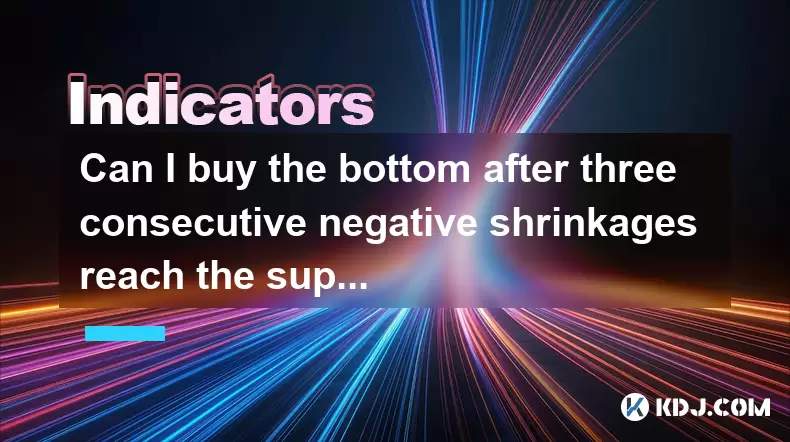
Can I buy the bottom after three consecutive negative shrinkages reach the support level?
Jun 29,2025 at 03:43am
Understanding the Context of Three Consecutive Negative ShrinkagesIn the cryptocurrency market, price patterns are often analyzed to predict potential reversals or continuations. A negative shrinkage refers to a situation where the candlestick body becomes smaller in a downtrend, indicating weakening selling pressure. When this happens three times conse...

Should I go if the average price line of the time-sharing chart suppresses the rebound?
Jun 28,2025 at 05:14pm
Understanding the Time-Sharing Chart and Average Price LineThe time-sharing chart is a real-time chart used in cryptocurrency trading to visualize price movements over short intervals, typically within a single trading day. It provides traders with insights into intraday volatility and momentum. The average price line, often calculated as a moving avera...

Does the double needle bottoming pattern need the cooperation of trading volume?
Jun 29,2025 at 06:29pm
Understanding the Double Needle Bottoming PatternThe double needle bottoming pattern is a significant technical analysis formation often observed in cryptocurrency charts. It typically appears after a downtrend and signals a potential reversal to an uptrend. Visually, it consists of two consecutive candlesticks with long lower shadows and small real bod...

Can I add positions after the EXPMA golden cross steps back on the yellow line?
Jun 28,2025 at 11:57am
Understanding the EXPMA Indicator and Its RelevanceThe EXPMA (Exponential Moving Average) is a technical analysis tool used by traders to identify trends and potential entry or exit points in financial markets, including cryptocurrency trading. Unlike simple moving averages, EXPMA gives more weight to recent price data, making it more responsive to new ...

How to operate the next day after the daily limit is released with huge volume?
Jun 28,2025 at 12:35pm
Understanding the Daily Limit and Its ReleaseIn cryptocurrency trading, daily limits are often set by exchanges to manage volatility or during periods of high market activity. These limits can restrict how much an asset's price can fluctuate within a 24-hour period. When the daily limit is released, it typically means that the price cap has been lifted,...

Is it necessary to stop loss when the lower track of the rising channel falls below?
Jun 28,2025 at 05:29pm
Understanding the Rising Channel PatternThe rising channel pattern is a popular technical analysis tool used by traders to identify potential upward trends in asset prices. It consists of two parallel lines: an upper resistance line and a lower support line, both sloping upwards. The price action typically oscillates between these boundaries, offering o...

Can I buy the bottom after three consecutive negative shrinkages reach the support level?
Jun 29,2025 at 03:43am
Understanding the Context of Three Consecutive Negative ShrinkagesIn the cryptocurrency market, price patterns are often analyzed to predict potential reversals or continuations. A negative shrinkage refers to a situation where the candlestick body becomes smaller in a downtrend, indicating weakening selling pressure. When this happens three times conse...
See all articles

























































































